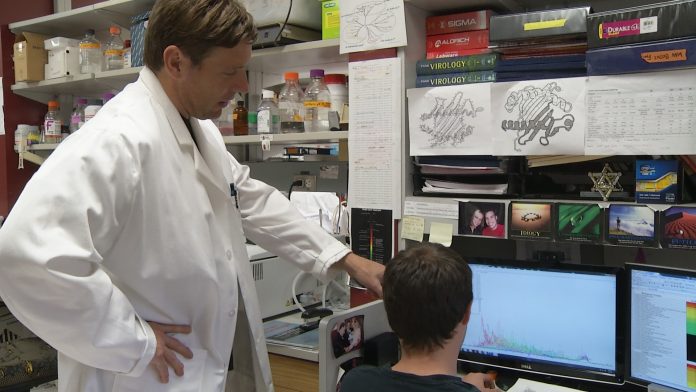
OU team assists in research focused on promising new cancer-fighting approach
We get vaccinated to keep from getting sick. Now, new research shows vaccines may prove powerful in the fight against cancer too.
The vaccines, in this instance, are personalized for each patient, designed to generate a powerful immune response against unique mutations in his or her own melanoma tumor cells. Figuring out which mutations to target fell to a team of researchers at the University of Oklahoma Health Sciences Center, headed by William Hildebrand, Ph.D., a member of the Stephenson Cancer Center and George Lynn Cross Research Professor of Microbiology and Immunology at the OU College of Medicine.
The work started with colleagues in St. Louis who used genomics to find genetic mutations within the cells of the tumor but not in the patient’s healthy cells. They uncovered thousands of cancer mutations.
That’s where the OU researchers stepped in. Hildebrand and other OU researchers zeroed in on proteins unique to melanoma cells that would betray the cancer cells very existence.
“This is a different approach that says we know what is specific to your particular tumor. That’s what we are going to target,” Hildebrand explained. “But if you have all of these mutations in the DNA of your tumor, which of these mutations can we target? Which of these mutations reveals itself on the surface of a tumor cell so you can focus the immune response to it with a vaccine, in this instance?”
Using specific tests and computer algorithms, Hildebrand’s team was able to predict and test which of the many mutations in the tumor cells would provide the best vaccine targets.
With the targets developed at the OU Health Sciences Center, co-investigators at Washington University used immunotherapy techniques to create a customized vaccine for each patient – much like a personalized smart-missile system inside the body. Early data reveals a revved up immune response to the tumor cells. More study is needed, but researchers believe the approach and the results are promising.
“This is an early generation of this research,” Hildebrand said. “We are going to get better and better at finding this population of targets and then selecting the specific targets to address the tumor.”
Hildebrand added that it’s an approach that may also work for other types of tumors.












